How to add a burn line to your woodturning.
Adding a burn line from a wire can accent a turning with a nice touch. A burn line can emphasize the rim of a goblet or vase. You can use them to differentiate sizes of crochet hooks or different tatting bobbins. They can focus your attention on a specific design feature or embellish a simple woodturning.
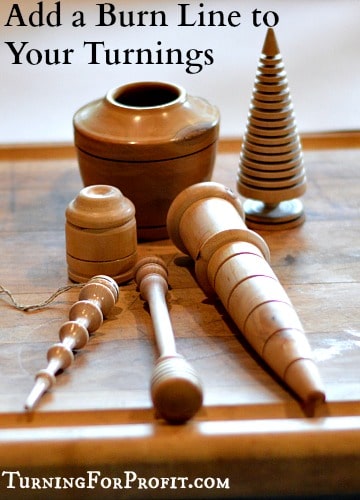
Burn lines are easy to do and add a decorative flare to your turning. These can be over done in my opinion but my daughter likes lots on anything that I turn for her. Burn lines can also be useful. The burn line defines a 1” distance on a Sett Gauge, and defines equal markings on Garden Dibblers as well.
The process is simple. You cut a groove in your wood with a skew chisel. Place a wire around your turning and line the wire up with your groove. With the lathe on, increase the pressure or friction between the wire and the wood. The wire heats up from the friction and makes a burn line on your turning.
The process of producing a burn line on your woodturning
Starting with a plain rolling pin I will add turn burn lines at the end of each handle.
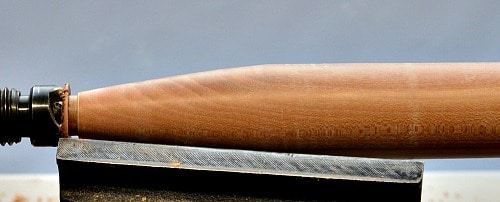
The first step for a burn line is to cut a small groove for the wire to fit into. I use a skew chisel point to get two small grooves on the end of the rolling pin handle.
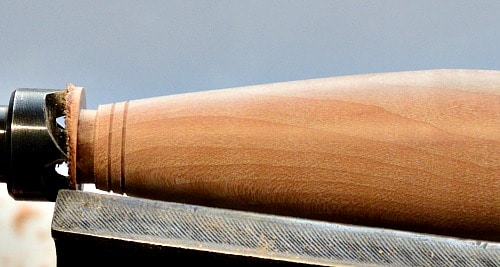
I place the wire around the turning making sure that I don’t catch the wire on the tool rest or other parts of the lathe.
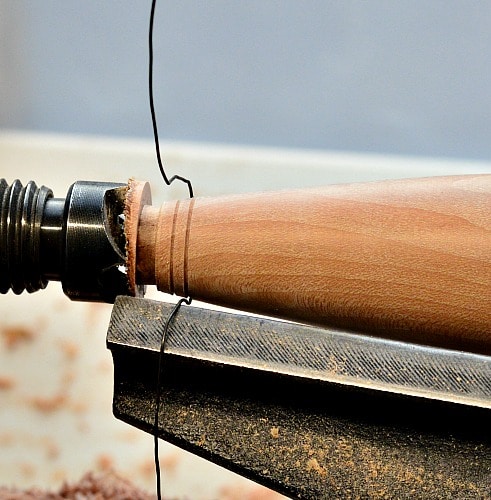
Pull on the wire with the wood spinning until you see the burn line and smoke. I usually use two hands to control the amount of pressure the wire has on the spinning wood. This lets you get a dark line without excessive burning. As I did this one handed in order to take the picture, my first burn is heavier and darker than normal.
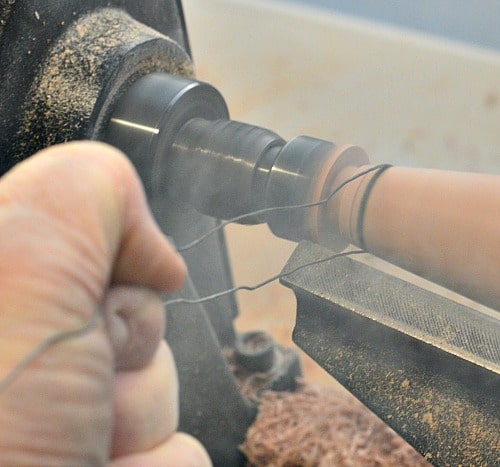
Now the wire is in position for the next burn line.
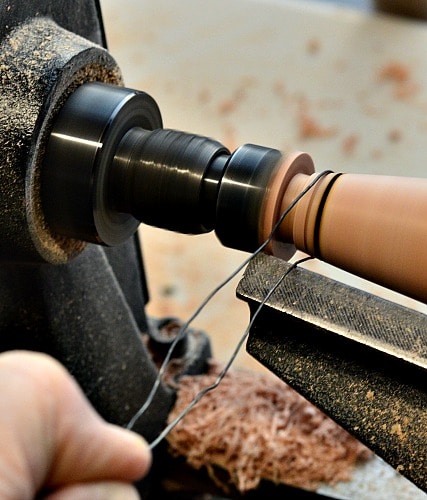
Pull the wire so that there is friction which creates burning and smoke.
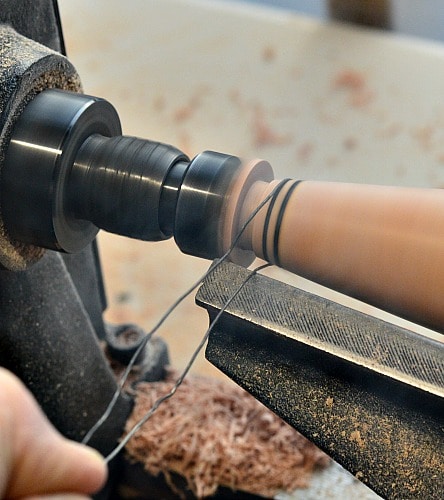
Repeat the process on the other handle.
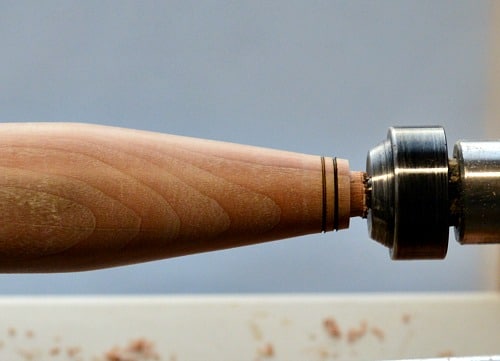
I would do the decorating before sanding the turning. This allows you to sand away enough wood to leave you with the perfect decoration. Here’s the finished rolling pin with the burn lines, sanding, and final polish.

This is a simple technique that you can use repeatedly in your woodturning. Straight forward to understand, yet they give you a beautiful result on your turning. On a honey dipper or wooden icicle the burn lines are nice decorations.
I turned a bowl out of Western Larch. I liked the idea of three distinct parts for the turning. So I used a burn line at the transition points. It was a little harder holding the wire on the bowl and getting enough pressure for the friction burn, but it did work. I then took fine shavings off with a skew chisel to refine the image of the line.
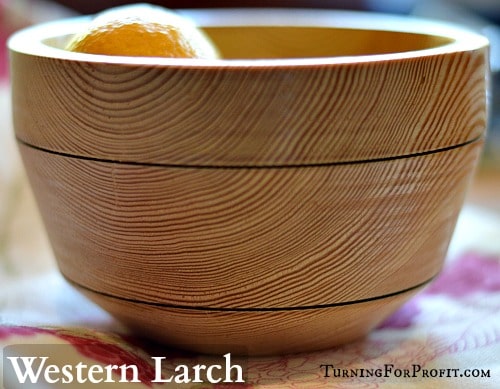
Burn lines add an accent to your woodturning. A simple burn line on an icicle decorates the turning without overwhelming the presentation.
I use a small diameter wire for my turnings. You could also use worn guitar strings which would give you different wire sizes to try. If your length of wire is too short and your fingers get hot, wrap the wire around a couple of short pieces of dowel and you will be fine.
When turning some bottle stoppers I wanted a very fine burn line. Before I had completely finalized the shape of the turning I cut a groove and used the wire to produce a burn line. To make the burn line smaller I used a skew chisel to take fine cuts until I had a line that was the right thickness for the bottle stopper. At that point I sanded and finished the turning.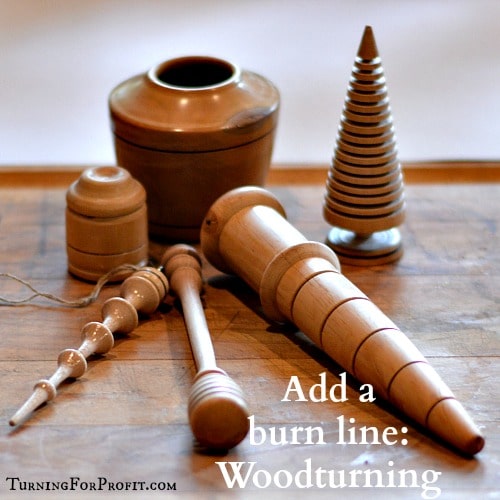
Let me know how you have decorated your turnings. If you like these posts please sign up for my email newsletter. It goes out once a week. It will contain recent posts along with other information that I hope you find helpful and encouraging. Remember to always turn safely.



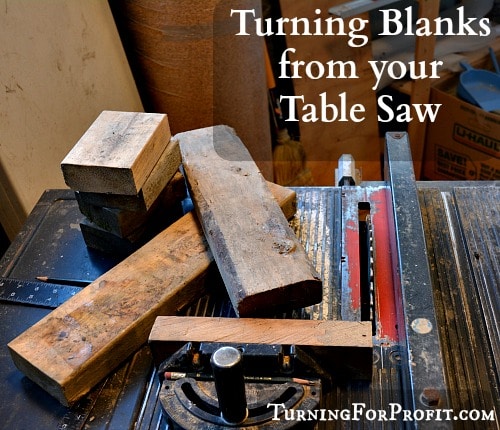
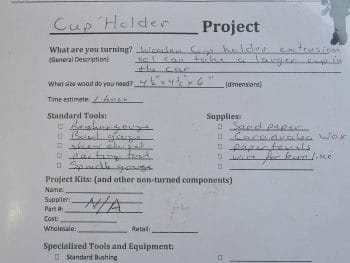


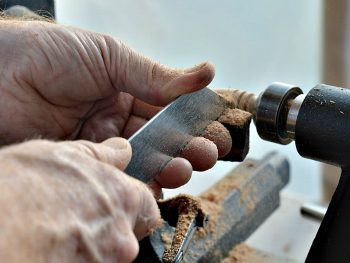

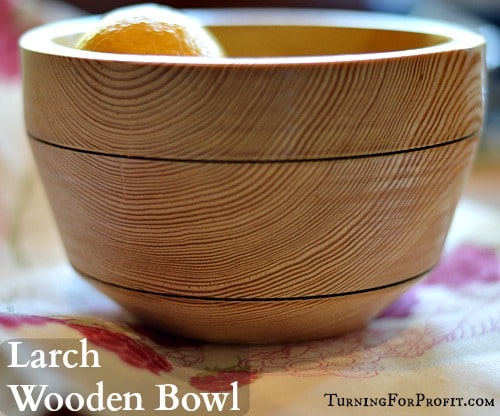


would like to burn lines inside of my bowl – how do I do this
Hi Milton,
I asked the Facebook group and they came up with three ideas you could try.
1. Small groove then use the edge of a bit of Formica
2. After you make a groove, bend a small piece of stiff wire to fit the curve and press into the groove to create the burn line. Hold with pliers or make some wooden ends because it will get hot.
3. I have even created burn marks with fine sandpaper on hardwoods at high speed but you need something besides your hand to hold on to it. Like Mike said most anything that will create friction will work but it will get very hot.
I’m going to try these out the next time I turn a bowl. Hope they help.
Very new to wood turning. Can you tell me what type of wire you’re using? Your site has been so informative! I just got a lathe, and now I have lots of ideas of some projects to start with. Thanks!
Kimberly, it is just basic wire, nothing special. I have even used a stripped twist tie in a pinch. Several turners really like to use old guitar strings as they come in different diameters. Hope this helps.
You should always have handles on your wire because if you have it in your fingers & it catches in the lathe it could tear your finger off.
Good point. I pinch the wire between my fingers. I have also never had the wire grab as I was making a burn line.
I use lots of burn lines in my bowl turnings. Especially on the bottom of the bowl. It is sort of my individualized signature on the bottom. I use a tool that plunges into the bottom and make three rings equal distance apart. I then take one of those precut pieces of melamine that you get from the BBS and plunge it into the grove until it burns a line into the bottom. Gives the viewer the impression that you have not just left the bottom plain but that you thought of doing that little extra to give the turning special interest. Leaves a nice touch.
Thanks for the idea Bob. Finishing where people are not likely to look is a sign of a professional. I always check the bottoms of bowls and the undersides of furniture! Like you said you are doing a little bit extra and that makes your work special.